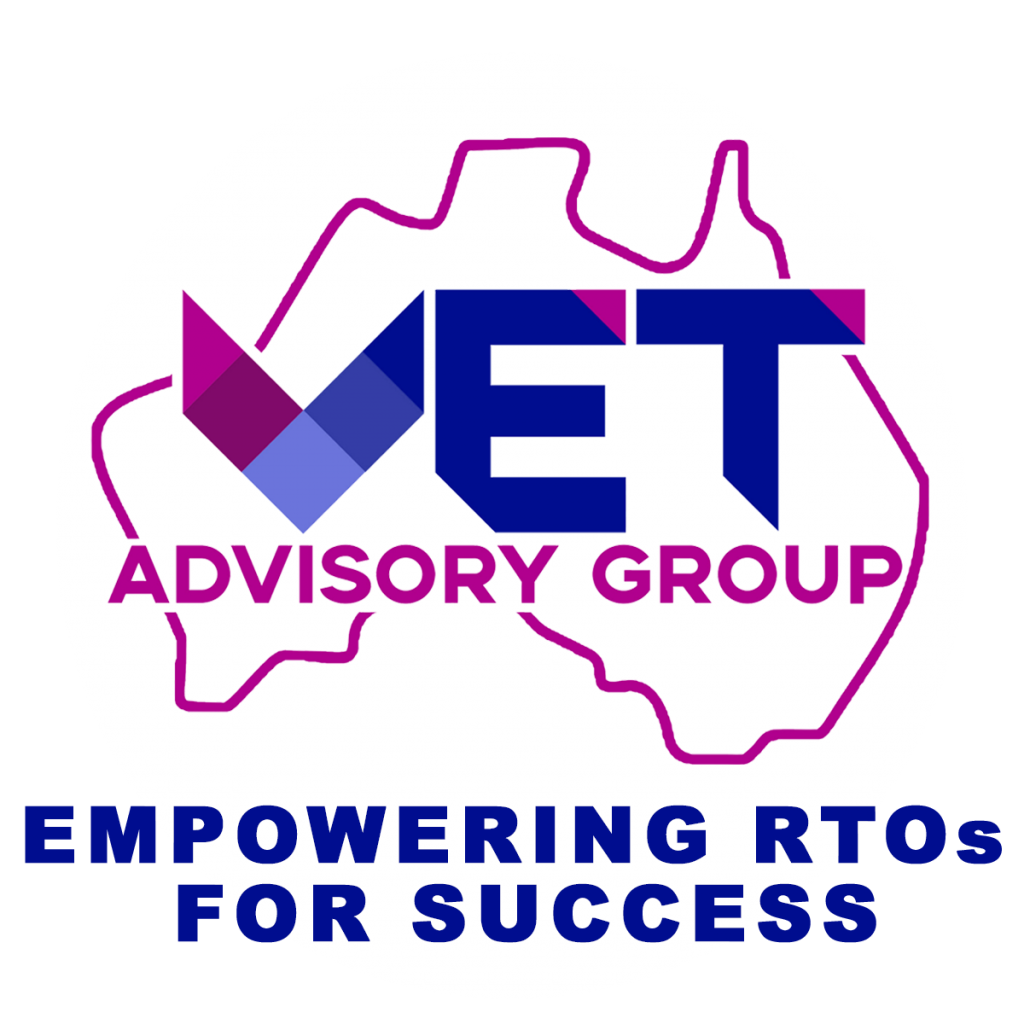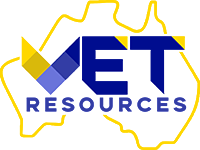

Introduction
RTO CEOs across Australia are preparing to submit their annual declaration on compliance. This declaration is vital for maintaining compliance with ASQA Standards. If you’re an RTO CEO, are you confident in your organisation’s compliance, or are you seeking assistance?
In this blog post, we’ll discuss how you and your RTO can prepare and complete accurate information to avoid future non-compliance in the audit.
What is the Annual Declaration on Compliance (ADC)?
The annual declaration is an online form that all Australian RTOs must complete. It is a mandatory process that requires RTOs to assess their compliance with the Standards. The process takes approximately 15-30 minutes to complete, but it may take longer if an RTO is not regularly conducting self-assessments. The annual declaration online form is available until midnight on 17 May 2023.
“RTO CEO will receive a weblink on 17 April 2023 to complete ADC.”
Importance of the Annual Declaration on Compliance
The Annual Declaration on Compliance is important for training providers and ASQA. It lets training providers check their compliance and make sure ASQA’s information is accurate. For ASQA, it helps spot new issues in the VET sector.
CEO’s Responsibility in the Annual Declaration on Compliance
The CEO or person legally responsible for the RTO registration must complete the annual declaration. Failure to submit the annual declaration is considered a breach of registration conditions. The CEO must ensure that the RTO complies with all national Standards. If there are any areas of non-compliance, the CEO must take steps to rectify them. Specifically, the CEO should focus on the following areas.
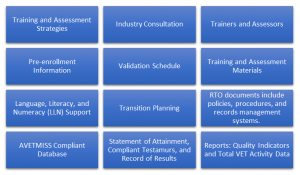
- Training and Assessment Strategies
- Ensure that strategies are up-to-date and aligned with industry needs.
- Confirm consultation with relevant stakeholders.
- Industry Consultation
- Establish and maintain strong relationships with industry stakeholders.
- Regularly gather and incorporate feedback.
- Trainers and Assessors
- Verify that trainers and assessors hold required qualifications and competencies.
- Offer professional development opportunities as needed.
- Pre-enrollment Information
- Provide accurate and comprehensive information to students before enrollment.
- Validation Schedule
- Develop and maintain a schedule for regular validation of assessment tools and judgments.
- Training and Assessment Materials
- Keep materials current and relevant to industry standards.
- Language, Literacy, and Numeracy (LLN) Support
- Assess and address LLN needs of students.
- Provide appropriate support services.
- Transition Planning
- Ensure smooth transitions when training packages or qualifications change.
- RTO documents include policies, procedures, and records management systems.
- Regularly review and update documentation and systems to ensure compliance.
- AVETMISS Compliant Database
- Maintain an AVETMISS compliant database for accurate data reporting.
- Statement of Attainment, Compliant Testamurs, and Record of Results
- Issue compliant documentation to students upon completion of their courses.
- Reports: Quality Indicators and Total VET Activity Data
- Collect and report data as per ASQA requirements.
Annual Declaration on Compliance components
The Annual Declaration on Compliance is a statement from an RTO about whether they comply with the Standards for Registered Training Organisations (RTOs) 2015. It also states if the RTO complies with the Standards for all certifications issued in the last 12 months. Upon submitting the annual declaration, an RTO must also report to ASQA that:
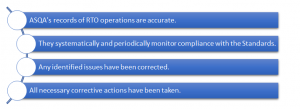
How to Prepare for the Annual Declaration on Compliance
RTO CEOs must review their organisation’s compliance with registration standards and conditions. They should attempt to complete the annual declaration afterwards. They can use ASQA’s self-assessment tool or any other internal audit tool for this purpose.
At the VET Advisory Group, we can help RTO CEOs by identifying compliance issues and answering questions about RTO procedures.
Addressing Non-Compliances
If non-compliances are identified, follow these steps:
- Identify the areas of non-compliance, keeping in mind that one non-compliant clause may affect others.
- Conduct a team meeting to discuss non-compliant areas and determine necessary changes to systems and processes.
- Develop a rectification plan that outlines action areas, required staff, timeframe, and priority.
- Brief, relevant staff on the work required and assign clear roles and responsibilities.
- Take action according to the plan.
- Monitor progress.
Compliance Declaration checklist:
- Check your RTO information on ASQAnet and Training.gov.au
- Update the information as required
- Monitor your RTO compliance and operation as explained above.
- Complete the self-assessment tool or any internal audit template
- Complete and submit your annual declaration on compliance form
- Store all the documents in your database
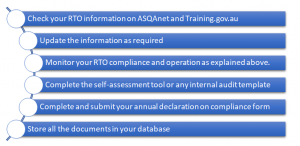
Conclusion
The ASQA Annual Declaration on Compliance is an essential process for RTO CEOs. By understanding the purpose of the declaration, preparing for it, and addressing any non-compliances, RTOs can maintain their commitment to delivering high-quality vocational education and training.
